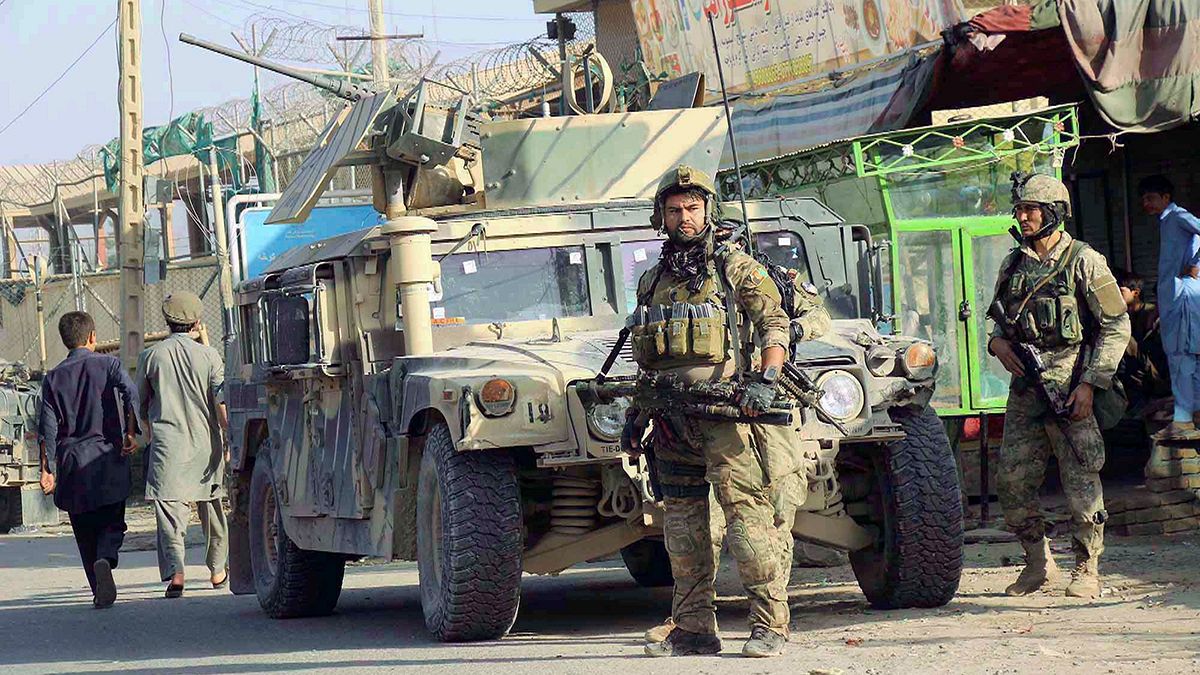Two days before an aid donor's conference for Afghanistan, the taliban make a show of force
Another show of strength from the Taliban took place in Kunduz on Monday. Two days before an aid donor’s conference in Brussels expected to raise billions of euros for Afghanistan. The ease with which the Taliban entered and controlled this provincial capital in such a short time, illustrates just how insecure Afghanistan remains.
Aftermath footage of US/ANSF Gunship attack on civilian buildings & shops in #Kunduz city. Please Share/RT pic.twitter.com/tO64o5mvsN
— Ahmet Yar (@Pashtunist) October 4, 2016
In need of back-up
Once again the Afghan army was forced to flee and may only able to regain control of Kunduz, a city with 260,000 inhabitants, with the help of special forces and US aircraft.
if you think things are going well in #Afghanistan
then take a look at this map #refugees#IDPpic.twitter.com/UVNX5Wbzz8— Hansen (@LotusHansen) October 4, 2016
It has been one year since the Taliban retook the city for the first time since they were defeated in 2001. They took control in under one week, and tried to impose their brand of Sharia law, leaving 300 people dead.
Hospital targeted
Then, on 3rd October, whilst US and Afghan forces battled to retake the city from the Taliban, a US plane bombed a Medecins sans Frontieres hospital, killing 42 and injuring dozens.
≡ agenceQmi ► Afghanistan: Médecins sans Frontières se retire de Kunduz http://t.co/xheh3roelVpic.twitter.com/WHK6MuxcnF
— Québectualité (@quebectualite) October 4, 2015
Kunduz is not the only major city targeted by the Taliban. The map is dotted with Taliban strongholds, disputed areas between the army, the taliban and in some cases with ISIS jihadists. Around Achin, IS are believed to have 1,500 fighters.
By the end of 2015 the Taliban had taken control of large areas around Lashkar Gah, the capital of the Helmand pronvince and a hub for opium cultivation. Afghan forces had to send reinforcements to the city which remains under siege.
[APPROXIMATE] Situation map of #Kunduz as of late 03/10/2016 #Taliban#Afghanistanpic.twitter.com/Kyo5M2n0lB
— Welsh_Rebele (@TeamWillofficia) October 3, 2016
Last April, the Afghan capital, Kabul, suffered one of the most deadly attacks since 2001. A car bomb attack against a government building killed 64 and injured around 350.
Postponing demilitarisation
The situation forced President Obama to scale back planned demilitarisation in Afghanistan.He announced to a press conference: “ Instead of going down to 5,500 troops by the end of this year, the United States will maintain approximately 8,400 troops in Afghanistan into next year through the end of my administration.”
A soon as the Taliban leader, Mullah Akhtar Mansour was killed by US drone in Pakistan last May he was replaced. His successor, Mullah Haibatullah Akhundzada called for the “American invaders” to leave Afghanistan.
While the international community rallies around to offer aid to Afghanistan, the Taliban want to show them that they have not yet been defeated.
